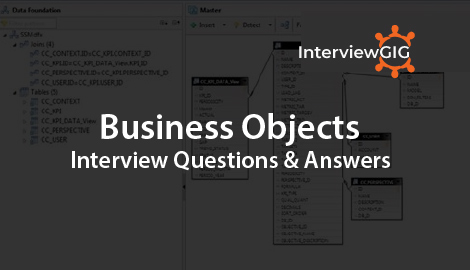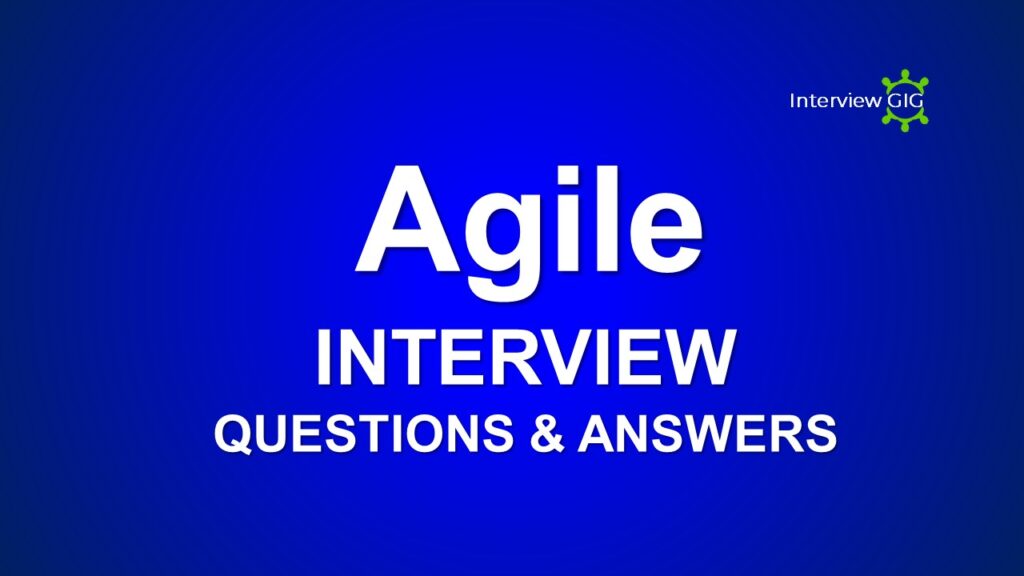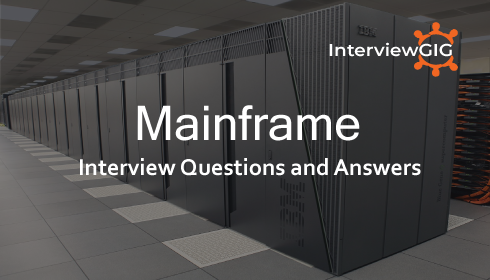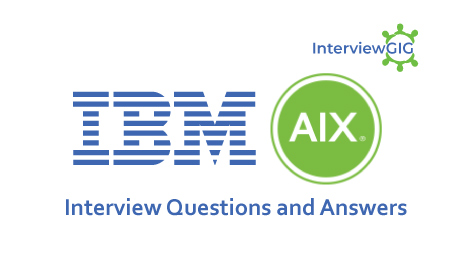What do you know about Cognos?
Cognos is a business intelligence and performance management software suite developed by IBM. It is a popular reporting and analytics tool that helps organizations transform raw data into meaningful insights for better decision-making. Cognos provides a wide range of features and capabilities to create, manage, and distribute reports, dashboards, and ad-hoc queries.
What are the Key components of the Cognos suite?
Key components of the Cognos suite include:
Cognos Analytics: This is the primary web-based platform for creating, viewing, and sharing reports and dashboards. It offers a user-friendly interface with drag-and-drop functionalities, allowing both business users and technical professionals to build and customize reports without extensive programming knowledge.
Report Studio: It is a component of Cognos Analytics that provides a powerful report authoring environment. Report Studio offers advanced formatting options, multiple data visualization types, and the ability to design complex reports with multiple queries and data sources.
Query Studio: Query Studio is a simplified report authoring tool within Cognos Analytics. It enables business users to create ad-hoc queries and simple reports with ease.
Framework Manager: Framework Manager is a metadata modeling tool that allows administrators and developers to define a semantic layer between the physical data sources and the end-user reporting tools. It provides a consistent business view of the data, making it easier for business users to understand and work with the data.
Cognos Connection: Cognos Connection is the web portal where users can access and manage reports, dashboards, and other BI content. It offers features like scheduling, bursting, and personalization of content.
Event Studio: Event Studio is a component of Cognos that allows users to set up and manage event-driven actions and notifications based on predefined conditions.
Active Reports: Cognos Active Reports enable users to create interactive reports that can be saved and distributed as standalone files without requiring access to the Cognos server.
Cognos Reporting tool is widely used across industries to provide valuable insights into various aspects of business operations, such as sales, finance, marketing, and human resources. It can connect to various data sources, including relational databases, multidimensional cubes, spreadsheets, and more. The ability to create ad-hoc reports, personalized dashboards, and schedule automated reports makes Cognos a comprehensive business intelligence solution for organizations of all sizes.
What is Business Intelligence?
BI is a broad category of application programs and technology used for query, by which we can do the reporting and analyzing the business multi dimensionally.
What is Model Filter?
It is used to restrict the data displayed on the Report. Model filter are reusable
What actually a project contains?
- Models
- Namespace
- Data source
- Parameter Map
- Packages
- Folder
- Query Subject
- Query Item
- Relationship
Can you define conformed dimension?
If any dimension will be connected with multiple fact tables then it is called conformed dimension.
What are the steps to import the two data sources in framework manager?
It can be done in the Run Metadata Wizard.
First of all Go to Run Metadata Wizard–>Select another database ( ex. suppose SQL Server is choose in prior attempt, then you can choose Oracle as new data source). At the last import it.
Can you define fan trap?
A one too many join links to a table which answer with another one to many join links is known as fan trap.
What is Data mining?
Data mining is the process of getting hidden trends from a data ware house.
What are all the different types of prompt in Cognos?
Following are the different types of prompt in Cognos:
- Value prompt
- Text Prompt
- Date prompt
- Time prompt
- Date and time prompt
Can you explain Model Durability?
All of the following criteria must be met in order to have what is considered to be a durable model:
- There is a design language created for the model that is not the same as the locales the users can choose from. For English, the design language is typically English(Zimbabwe).
- The design language name of all namespaces, query subjects, and query items that are published in a package must never change after the package is initially published. Other language names can change as needed, though.
- The structure of a published package’s namespace(s), query subjects, query items, dimensions, shortcuts, etc, must not change over time. This structure is stored in a specification’s definition, along with the design language’s names, so this is the reason these must not change.
- In IBM Cognos 8.4.1 the element must exist in model.xml. In IBM Cognos 10 the project level property Use Design Locale for Reference ID must be set to true.
List the different type of securities can we apply in framework manager?
In IBM Cognos Framework Manager, security is a way of restricting access to metadata and data across IBM Cognos products.
There are different types of security in Framework Manager:
Data Security: You create a security filter and apply it to a specific query subject. The filter controls the data that is shown to your users when they set up their reports.
Object Security: You secure an object directly by allowing users access to the object, denying users access to the object, or keeping it hidden from all users.
What are some advantages of Cognos?
Following are the advantages of Cognos:
- Planning
- Analysis
- Forecasting
- Scorecard
What are all the types of indexes in Cognos?
Following are the types of Indexes in Cognos:
- Bitmap index
- B-tree index
- Function based index
- Reverse key and composite index
Can you explain a Cognos Controller?
IBM Cognos Controller is part of an integrated Financial Close Management (FCM) solution, built on an efficient, purpose-built platform. It helps you deliver complete financial results, create financial and management reports, and provide the CFO with an enterprise view of key ratios and metrics.
Can you explain Cognos Planning?
Flexible enterprise software for planning, budgeting, forecasting and analysis. IBM Cognos Planning enables you to develop plans, budgets and forecasts faster and more efficiently. Cognos Planning lets you create, compare and evaluate business scenarios.
Can you define Bitmap Index?
A bitmap index is used for replacement of list of rowids for each key value. This index is mainly efficient for data warehousing as it has low cardinality and low updates.
Can you define Folder?
A folder consists of repository objects like sources, targets, transformation and mapping that help to organize data warehouse.
Can you define a Datastore in Cognos?
A data store is nothing but a query database or a relational database or files that can be accessed through IBM Cognos.
Can you define a Query Subject?
A Query subject is a set of query items that have inherent relationship and it is basic building block on framework manager.
What are the diffrent types of report?
Following are the types of report in Cognos:
- Blank report
- List report
- Cross report
- Chart report
- Repeater report
What are the two types of framework manager?
There are two types of framework manager and they are as follows:
- Presentation layer
- Physical layer
What are all types of prompt?
Following are the types of Prompt used in Cognos:
- Value
- Textbox
- Select and search
- Date
- Time
- Date and time
- Interval
- Generated
- Prompt button
Can you define dimension?
Dimension is defined as structure of a cube. A dimension should have at least one key attribute and remaining attribute can define hierarchies.
Can you explain Dynamic Query Mode?
A new Dynamic Query Processing Mode (DQM) to the existing query service designed to improve query performance.
Enhanced Java-based query execution mode introduced in 10.1 to support select OLAP sources
Leverages JDBC access to supported data sources
What are all the types of gateway used in Cognos?
Following is the list of gateway used in Cognos:
- Common Gateway Interface (CGI)
- Internet Service Application Interface (ISAPI)
- Tomcat Server
What are Determinants?
Determinants Feature first introduced in Cognos 8 used to provide control over granularity when aggregating
Reflects granularity by identifying groups or subsets of data in a query subject
Used to ensure that repeating data is aggregated correctly
Are set during import based on unique key and index information in a database
Used by Framework Manager to determine levels in default hierarchy when auto-generating regular dimensions from query subjects
Can you define Cognos powerplay?
Cognos powerplay is nothing but a multidimensional on-line analysis of data.
What are the Message Flows?
The orchestration is achieved with message flows in IBM Integration Bus.
The following activities can be tied together:
Acquiring and storing data
Aggregating data
Running predictive models
Feeding data back to external systems or starting external processes
Message flows are supplied with IBM Predictive Maintenance and Quality and must be customized with IBM Integration Bus. The message flows are organized into the following applications:
PMQEventLoad
PMQMasterDataLoad
PMQMaximoOutboundIntegration
PMQMaintenance
PMQModelTraining
PMQQEWSInspection
PMQQEWSIntegration
PMQQEWSWarranty
PMQTopNFailure
What are the types of studio present in Cognos?
There are five types of studio are:
- Query Studio
- Metrics Studio
- Analysis Studio
- Report Studio
- Event Studio
Can you explain New Content Durability?
All new content developed with IBM Cognos BI will be durable, as long as the model is durable. Existing non-durable content can be made durable by appropriately replacing the non-durable components of those specifications with durable components. Existing content is generally made durable over time as the content gets updated for reasons other than durability
What is looping and how to avoid it in framework manager?
Loop joins in the model are typically a source of unpredictable behavior. This does not include star schema loop joins.
When cardinality clearly identifies facts and dimensions, IBM Cognos software can automatically resolve loop joins that are caused by star schema data when you have multiple fact tables joined to a common set of dimension tables.
In the case of loop joins, ambiguously defined query subjects are the primary sign of problems. When query subjects are ambiguously defined and are part of a loop join, the joins used in a given query are decided based on a number of factors, such as the location of relationships, the number of segments in join paths, and, if all else is equal, the alphabetically first join path. This creates confusion for your users and we recommend that you model to clearly identify the join paths.





